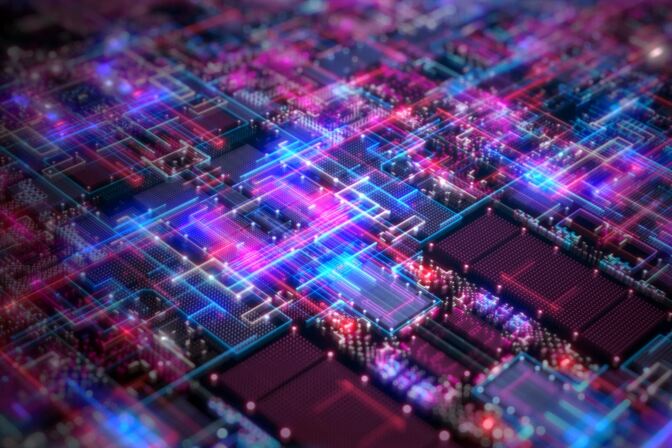
U-Michigan announces most advanced AI research complex with historic Los Alamos alliance
The planned facility for high-performance computing and AI research has secured $100M from the state.

The planned facility for high-performance computing and AI research has secured $100M from the state.
A state-of-the-art AI research facility under development by the University of Michigan and Los Alamos National Laboratory will bring one of the world’s most powerful supercomputing facilities to Michigan, enabling advancements in science, energy and national security.
The $1.25 billion facility for high-performance computing and AI research will house two centers, according to Michigan News. One will support Los Alamos scientists’ and engineers’ research and development on critical national security AI challenges. The other will be an academic computing center where U-M faculty, students and partners from across the state can collaborate with Los Alamos researchers in areas such as computational science, AI, materials science, advanced manufacturing and energy. The cooperative will also design joint workforce development programs and educational programs for students and trainees.
Construction is expected to begin in 2026, with the building being fully operational in 2030.

Explore the forefront of AI
at Michigan Engineering
The joint facility builds on the Strategic Partnership and Accelerated Research Collaboration (SPARC) between Los Alamos National Laboratory and U-M that launched last year. SPARC forges research collaborations between co-located LANL and University of Michigan scientists to enable transformative advances in science, engineering, and national security. This partnership includes a five-year, $15 million research contract led by Karthik Duraisamy, professor of aerospace engineering and director of the Michigan Institute for Computational Discovery and Engineering. That research contract focuses on developing advanced computing technologies, including artificial intelligence and sophisticated modeling techniques, to address complex physics challenges like unlocking fusion’s potential as a clean-energy source, according to Michigan News.
“The future of scientific discovery and engineering innovation will be primarily driven by scientific computing and AI, but success demands extreme-scale infrastructure and large teams,” Duraisamy said. “We have an unprecedented opportunity to bring together complementary expertise from both institutions to address some of the grand challenge problems facing society.”
“The future of scientific discovery and engineering innovation will be primarily driven by scientific computing and AI, but success demands extreme-scale infrastructure and large teams.”
Karthik Duraisamy, Professor of Aerospace Engineering and Director of the Michigan Institute for Computational Discovery and Engineering.
The project has secured a $100 million Strategic Site Readiness Program grant from the state, earmarked for site development, construction and other related activities necessary to build the new research centers. Substantial contributions to finance the facility will come from Los Alamos National Laboratory, which will directly contribute $300 million, and from U-M, which will provide direct contributions of $220 million and facilitate the financing of the remaining $630 million, according to the U-M Office of Government Relations.
“Our new partnership and growing collaboration with Los Alamos National Laboratory will sustain and strengthen U-M’s impact and excellence in research, innovation and discovery,” U-M President Santa J. Ono said in December. “In addition to offering incredible new opportunities for our students, staff and faculty, this effort will create high-quality jobs and invigorate the state of Michigan’s place in the growing AI ecosystem and flourishing information economy.”
Development of the new facility dovetails with other plans to increase the university’s research footprint, including the creation of a new Innovation District on North Campus that will encompass academic and research spaces. The district—designed to better facilitate research and partnership endeavors—is a key component of the university’s new comprehensive physical campus plan.
Read more about the facility from the U-M Office of Research.